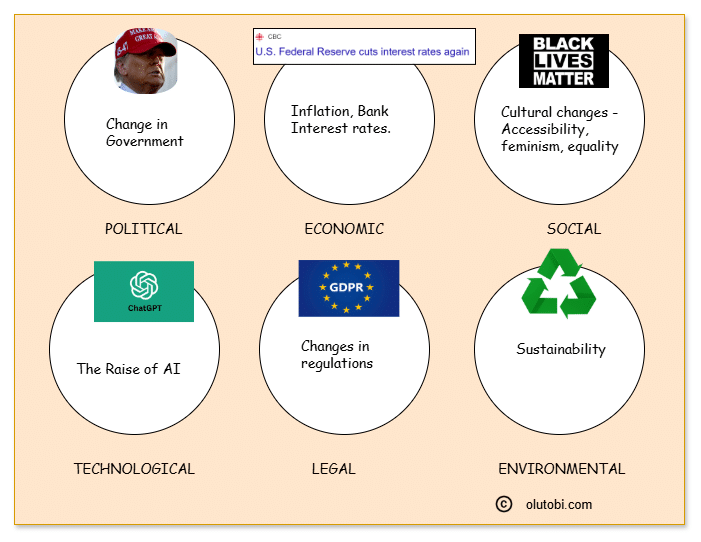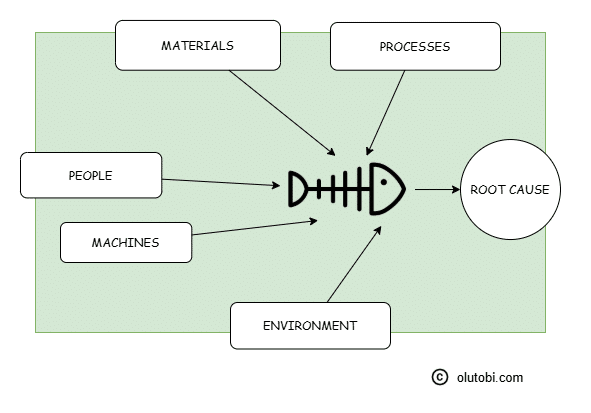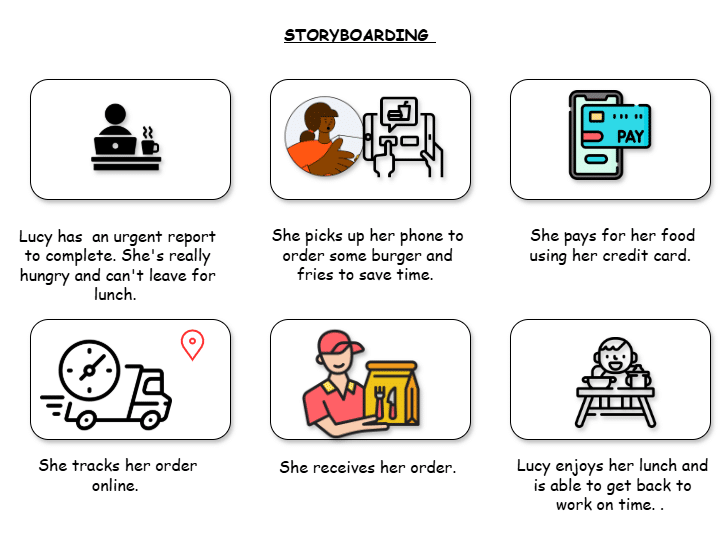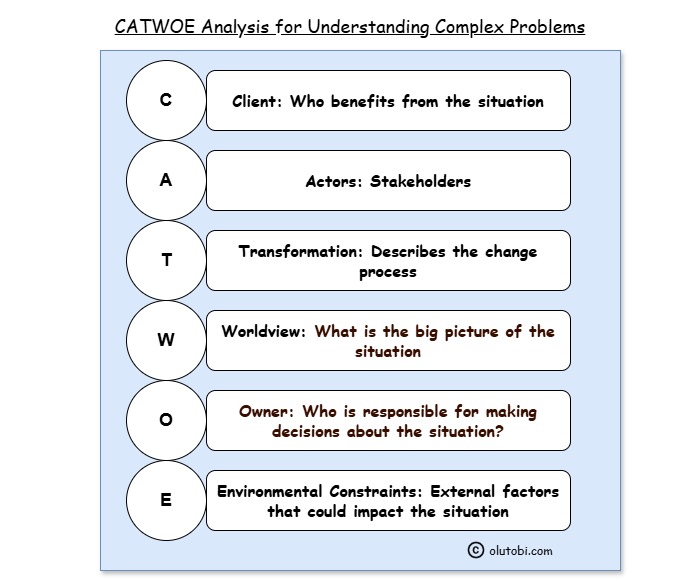What Are Business Analysis Techniques?
Business analysis techniques are structured approaches that professionals use to identify business needs, problems, and opportunities to improve organizational processes, products, and systems. These techniques help analysts gather and analyze data, define requirements, and propose solutions that align with business goals. They are used across various industries and can be applied to diverse projects, including software development, process improvement, change management, and strategic planning.
Business Analysis techniques can be grouped into several categories
Requirement Gathering: Techniques that focus on eliciting and documenting stakeholder requirements (e.g., interviews, surveys, workshops).
Analysis and Modeling: Techniques for analyzing data and modelling processes or systems (e.g., flowcharts, use case diagrams).
Strategic Analysis: Techniques for evaluating the organization’s position and environment (e.g., SWOT analysis, PESTLE analysis).
Problem Solving: Techniques that aid in identifying root causes and solutions (e.g., Fishbone diagrams, brainstorming).
Testing and Validation: Techniques to ensure solutions meet the defined requirements (e.g., user acceptance testing, prototyping).
12 Common Business Analysis Techniques
CATWOE
The CATWOE technique identifies key stakeholders and their perspectives, ensuring that solutions consider the needs of all parties involved. It stands for Clients, Actors, Transformation, Worldview, Owner, and Environmental constraints, providing a comprehensive framework for analysis.
CATWOE Template:
Clients:
Who benefits from the situation
Actors:
List all stakeholders involved.
Transformation:
Describe the transformation process.
Worldview:
General view or opinion about the situation
Owner:
Who is responsible for making decisions about the situation
Environmental Constraints:
Note any limitations impacting the solution.
Example: Budget restrictions, regulatory compliance.
User Stories
User stories collect end-user perspectives and requirements, allowing businesses to create highly user-focused solutions.
Template:
As a [role], I want [goal] so that [benefit].
Example: As a customer, I want to track my orders so that I can see when they will arrive.
Acceptance Criteria:
Criteria 1: [Example: User can view order status.]
Criteria 2: [Example: User receives email notifications.]
Requirement Analysis
This technique involves gathering detailed requirements through interviews and workshops with stakeholders.
PESTLE Analysis

PESTLE analysis examines external factors (Political, Economic, Social, Technological, Legal, and Environmental) that can impact an organization’s strategic planning. It helps identify potential threats and opportunities in the business environment.
Political:
[Example: New data protection laws affecting software development.]
Economic:
[Example: Increasing software development costs due to inflation.]
Social:
[Example: Growing demand for remote work solutions.]
Technological:
[Example: Emergence of artificial intelligence in software applications.]
Legal:
[Example: Compliance with GDPR.]
Environmental:
[Example: Need for eco-friendly server solutions.]
Brainstorming
A collaborative technique that encourages creative thinking, brainstorming allows participants to generate a wide range of ideas and solutions to problems. It is often used in conjunction with other analysis methods. Brainstorming is usually limited to short periods to maintain focus and energy and a diverse team encourages different perspectives, enhancing creativity.
Key aspects include:
Divergent Thinking: Participants are encouraged to think freely and creatively, without constraints, to explore various solutions.
Structured Activities: Techniques like “Crazy 8s” or “How Might We” questions help guide the brainstorming session, ensuring everyone contributes.
All generated ideas are recorded for later evaluation and refinement, ensuring no concept is lost.
Use Case Modeling
Use case modelling illustrates a system’s functionality and user interactions. It is particularly useful in software development projects, helping to define system requirements and user experiences.
Use Case Modeling Template:
Use Case Title:
[Example: User Login]
Actors:
[Example: End-user]
Preconditions:
[Example: User has an account.]
Main Flow:
- The user enters their email and password.
- The system validates credentials.
- The User is redirected to the dashboard.
Postconditions:
[Example: User is logged in successfully.]
MOST Analysis
The MOST technique (Mission, Objectives, Strategy, and Tactics) ensures that an organization remains aligned with its mission by focusing on its goals and the necessary actions to achieve them.
MOST Analysis Template:
Mission:
[Example: To provide the best software solutions for small businesses.]
Objectives:
[Example: Achieve a 20% market share within two years.]
Strategy:
[Example: Develop a user-friendly interface and robust support system.]
Tactics:
[Example: Conduct user testing and gather feedback regularly.]
SWOT Analysis
SWOT analysis is a comprehensive technique that assesses internal strengths and weaknesses alongside external opportunities and threats. It provides valuable insights for strategic planning and decision-making.
Fishbone Diagram (Ishikawa)
 This visual tool helps identify the root causes of problems by categorizing potential causes into groups. It encourages a systematic approach to exploring all factors contributing to an issue.
This visual tool helps identify the root causes of problems by categorizing potential causes into groups. It encourages a systematic approach to exploring all factors contributing to an issue.
Fishbone Diagram (Ishikawa) Template:
Main Problem:
[Example: High customer churn rate.]
Categories:
People: [Example: Lack of training for support staff.]
Processes: [Example: Inefficient onboarding process.]
Materials: [Example: Poor quality product documentation.]
Environment: [Example: High-stress work environment.]
Scenario Analysis
This technique involves creating different scenarios based on varying assumptions to prepare for uncertainties. It helps organizations make informed strategic decisions and identify risk mitigation strategies.
Scenario Analysis Template:
Scenario Title:
[Example: Economic Downturn]
Assumptions:
[Example: Reduced customer spending.]
Potential Outcomes:
Outcome 1: Decreased sales revenue.
Outcome 2: Increased competition for limited customers.
Response Strategies:
[Example: Implement cost-cutting measures.]
Storyboarding
 Storyboarding visually outlines a project or process narrative, mapping out user experiences or project timelines. It facilitates effective communication of complex ideas and enhances understanding among stakeholders. Each frame is drawn by hand on paper or a digital platform. These sketches represent key scenes and are usually accompanied by notes describing the scene.
Storyboarding visually outlines a project or process narrative, mapping out user experiences or project timelines. It facilitates effective communication of complex ideas and enhances understanding among stakeholders. Each frame is drawn by hand on paper or a digital platform. These sketches represent key scenes and are usually accompanied by notes describing the scene.
Storyboarding Template:
Storyboard Title:
[Example: Customer Journey for Onboarding]
Scenes:
1: User signs up for the service.
2: The user receives a welcome email.
3: The user completes the onboarding tutorial.
4: The user explores the dashboard.
Olutobi
I write about business and project management.
10+ years working in program management. I've worked in health-tech, community health, regulatory affairs and quality assurance.



